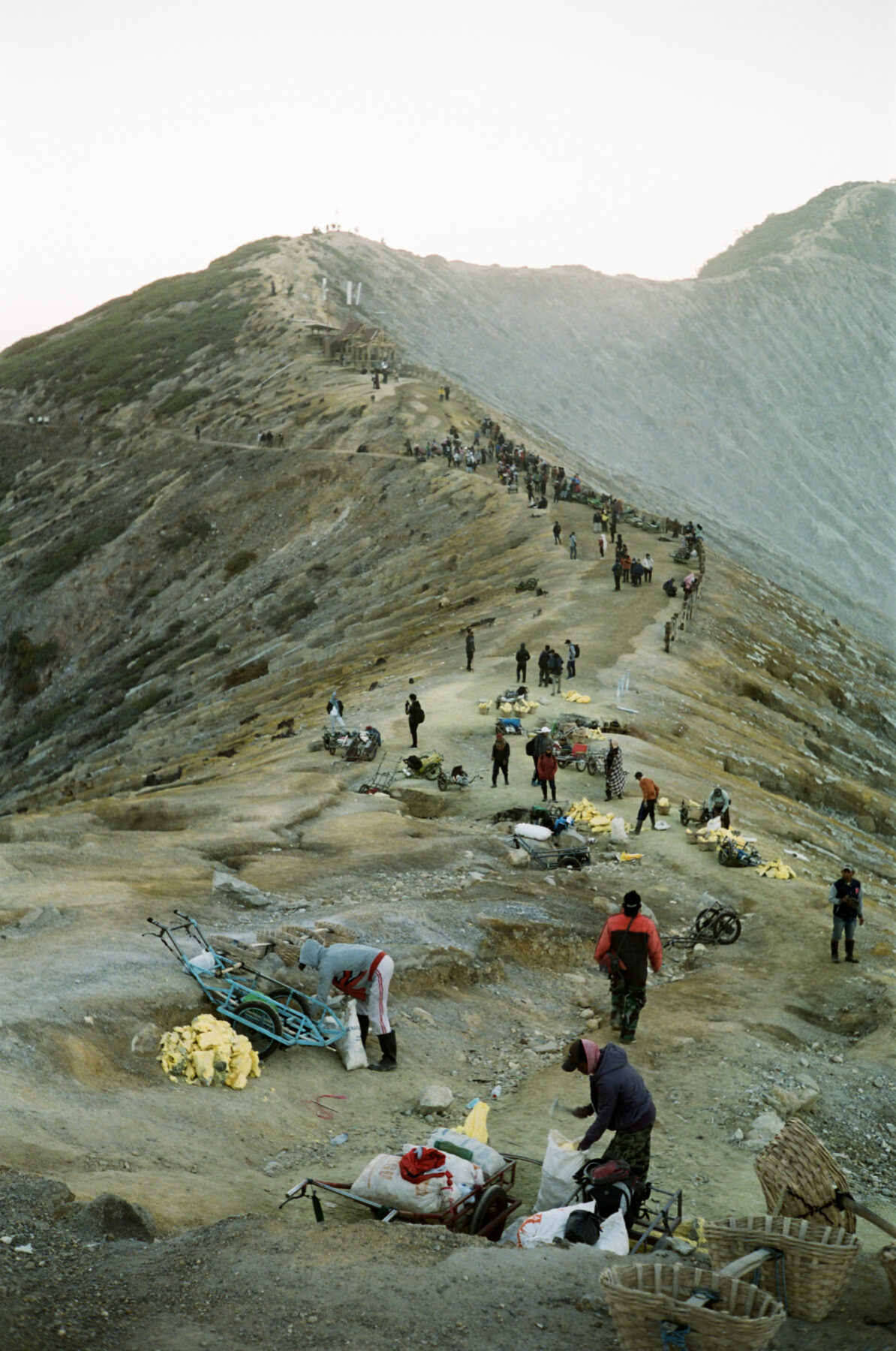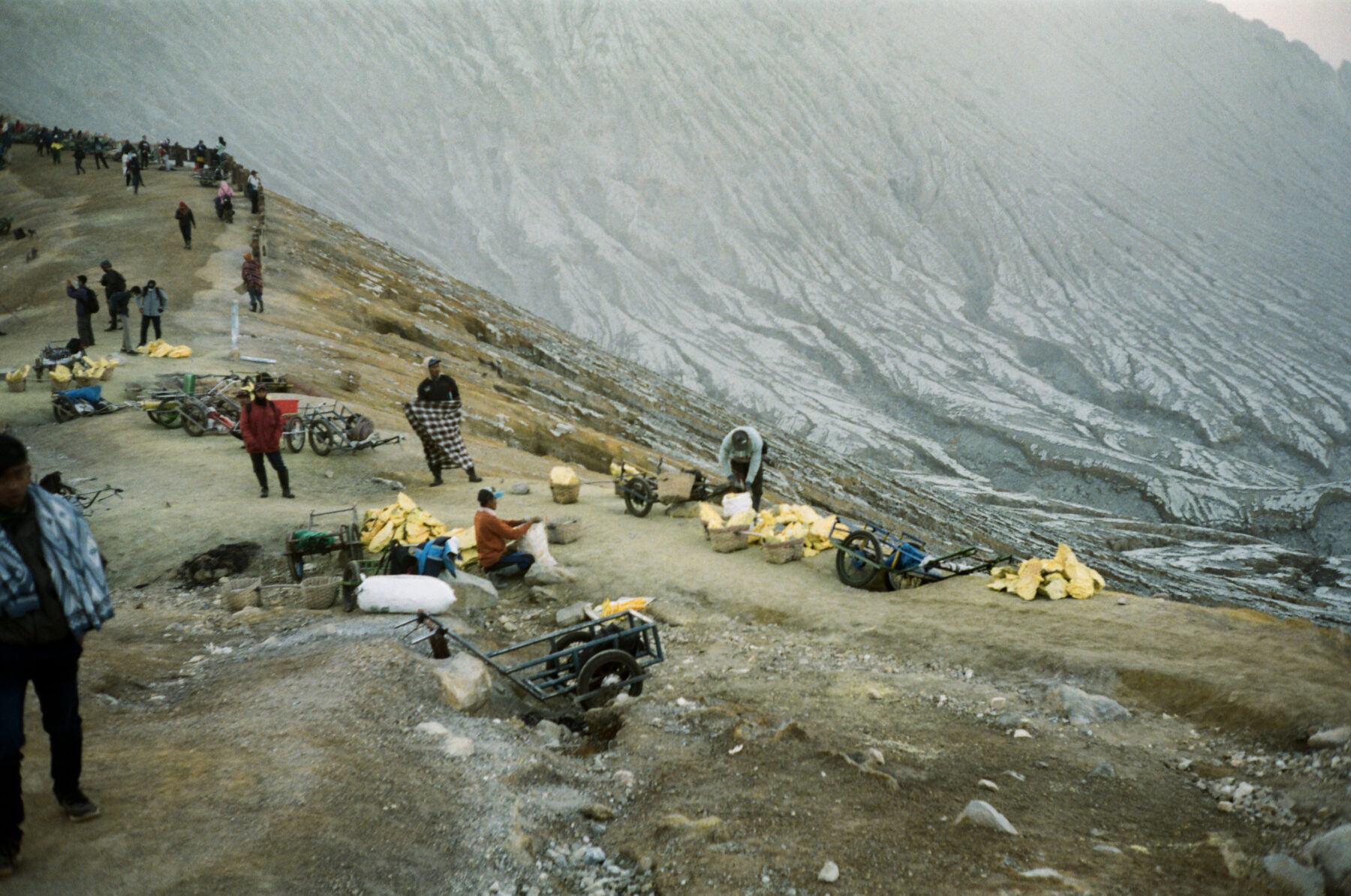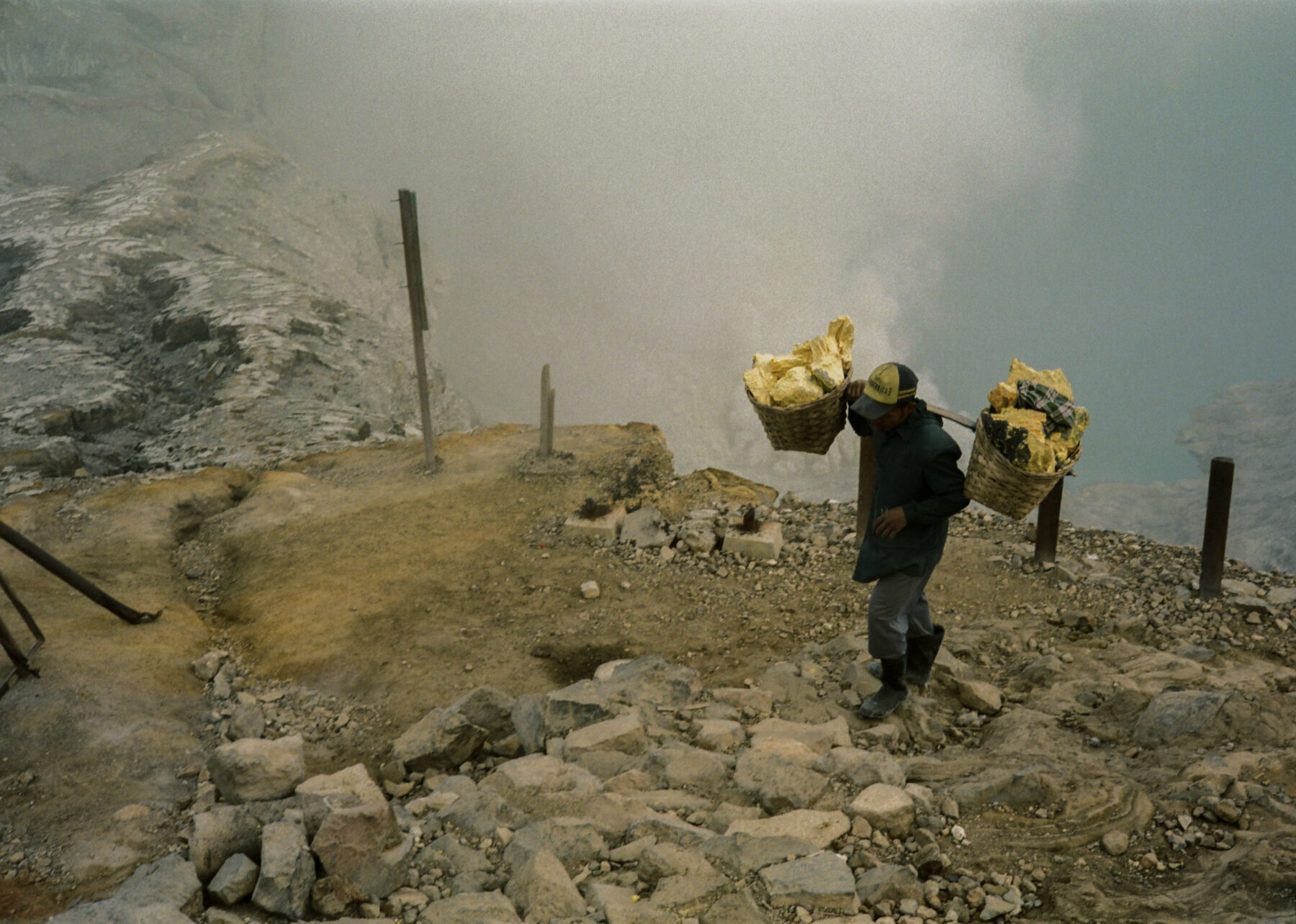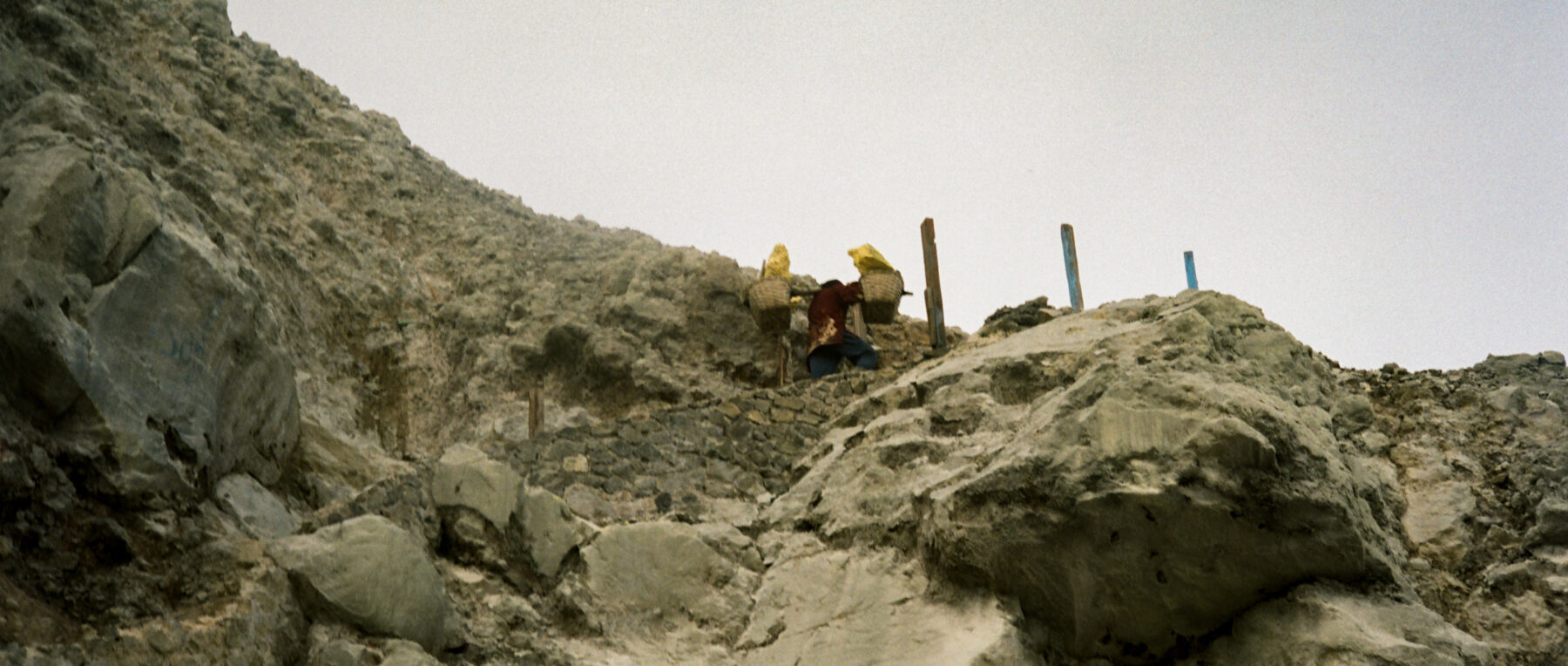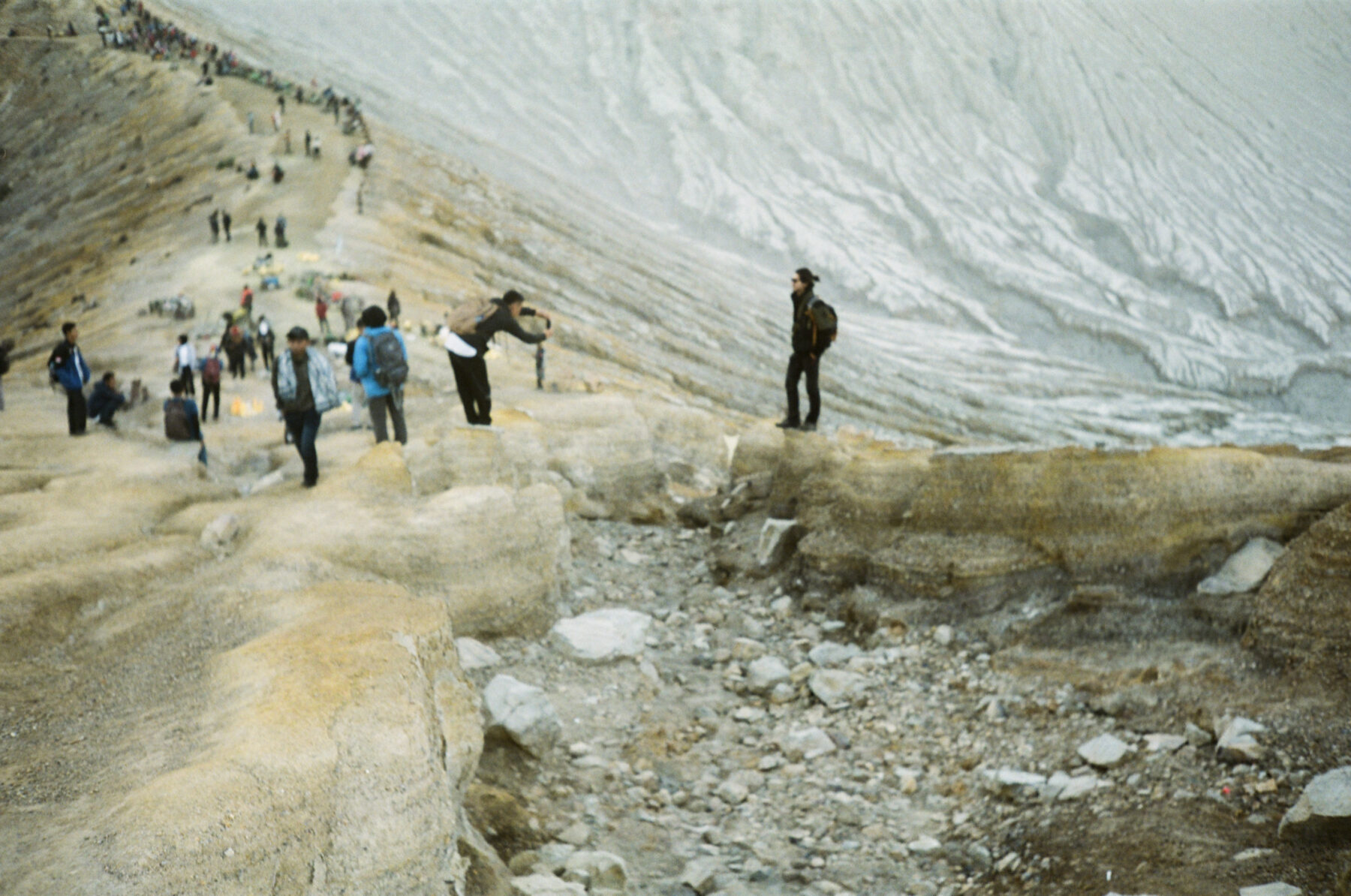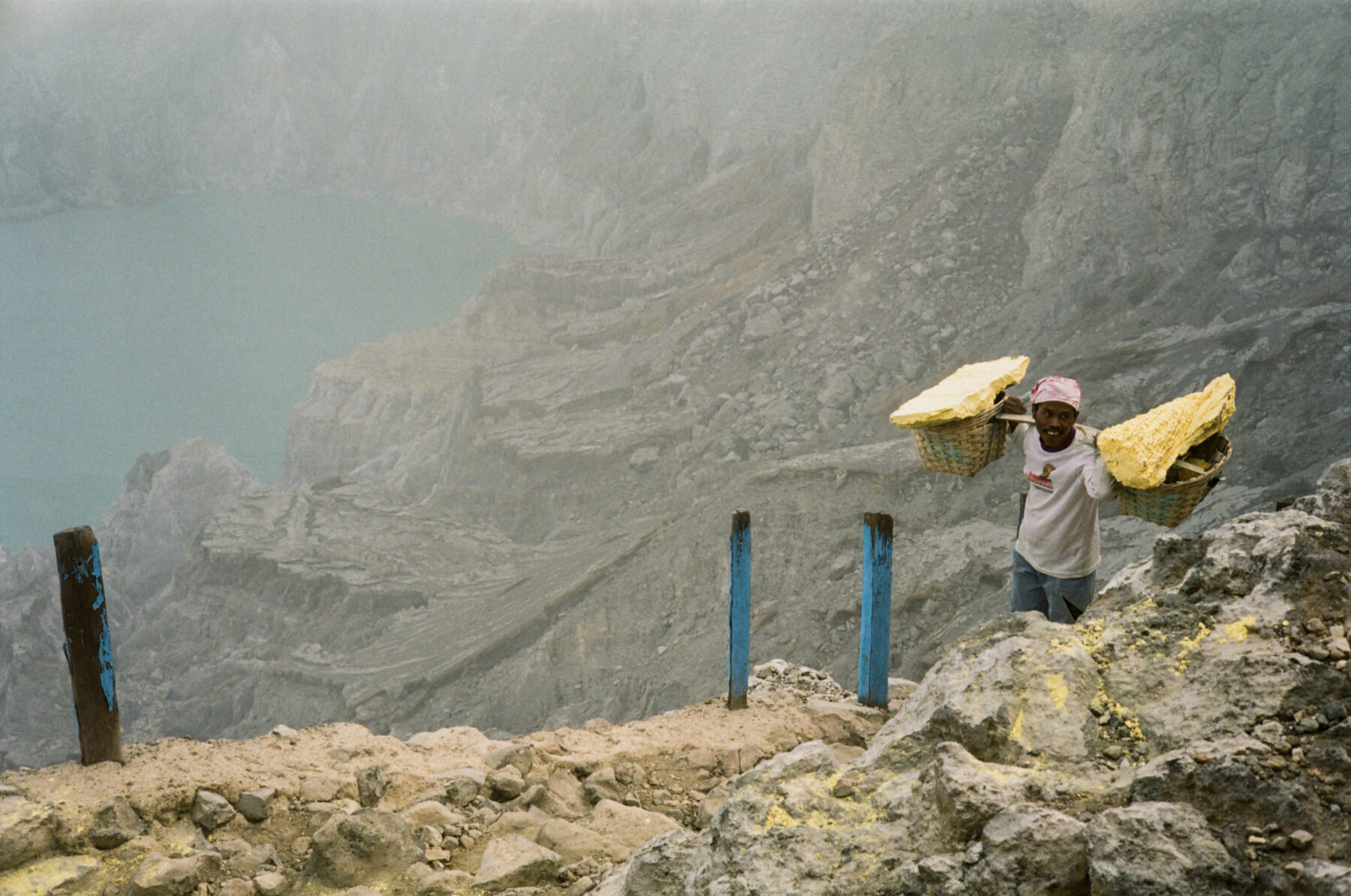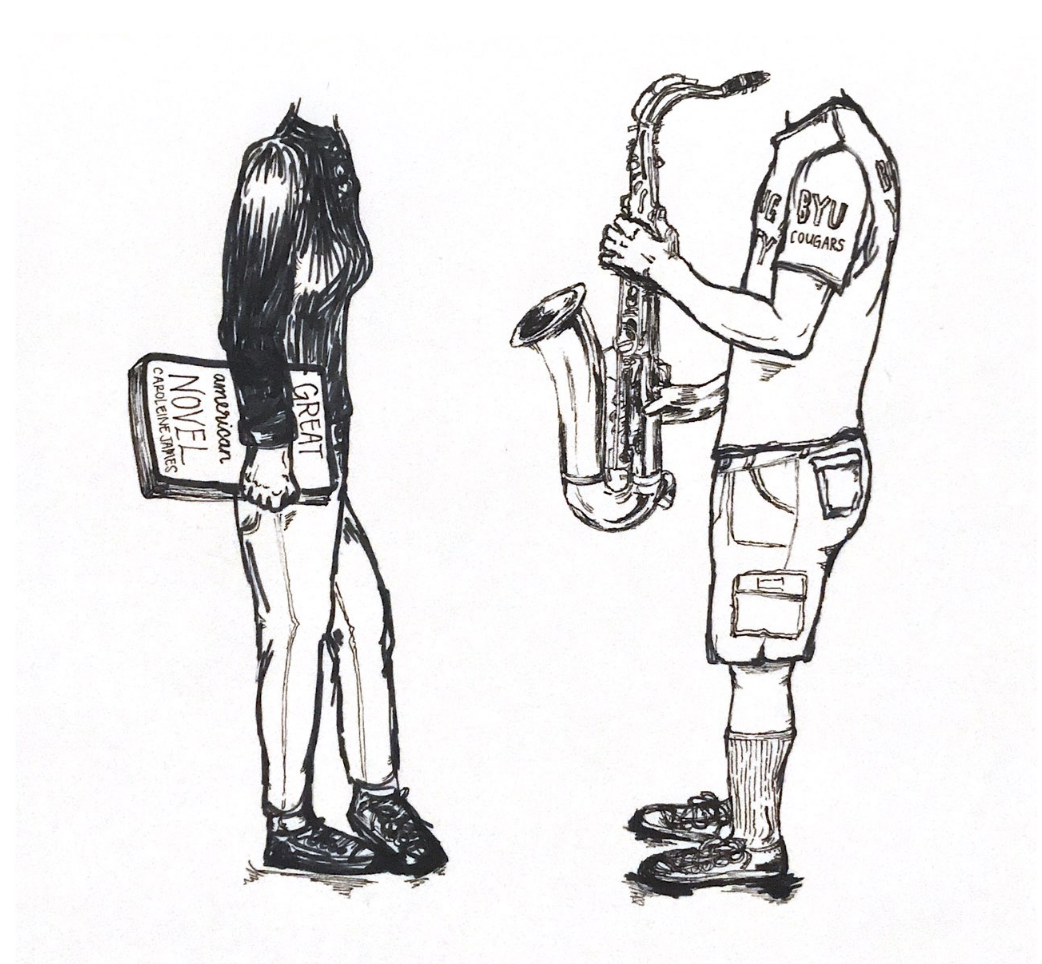The caldera of the volcano Ijen is faded gray and completely silent. The sulfur gas keeps out all animal life—no birds, no insects, no rodents. The gas is yellow where it breathes from the ground, gray-white as it rises into puffy clouds at the rim of the crater. Tourists watch the sun rise over the backs of men carrying the sulfur up from below.
When the men cough, their racking breaths are dampened by the thick air. They are Javanese men no older than fifty, and their backs are calloused from the basket-pole. The full baskets weigh as much as ninety kilograms, much more than the men carrying them. The trail is steep and rocky.
From the rim of the crater, the men wheel carts of sulfur down the rutted trail, hundreds of kilograms at a time, to the processing plant at the base of the mountain. At a weigh station near the volcano, processing facility PT. Candi Ngrimda pays the men by the weight of their harvest. Most make about three times the region’s average wage. They work from midnight until almost 2 p.m.
In the cool night air, the sulfur condenses into liquid, then hardens solid. Pipes concentrate the gasses, speeding up the accumulation of hardened rocks. The fresh sulfur is bright yellow. The locals call it the devil’s gold, named for the price paid by the men who extract it. Sulfur is used for explosives, match heads, electronic components, and beauty products. But PT. Candi Ngrimba uses the sulfur here, mined from Ijen, to whiten the sugar grown in the region.
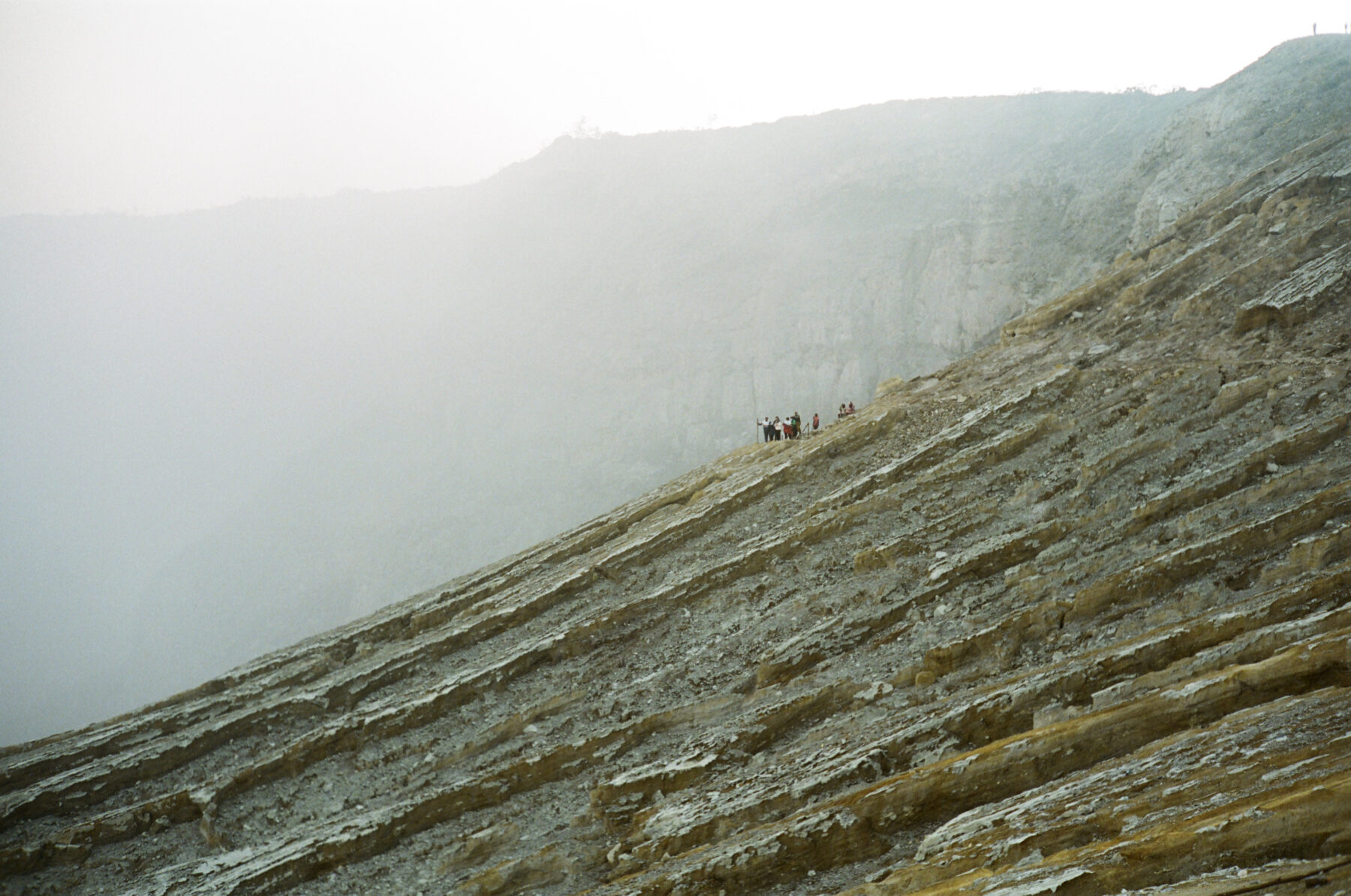
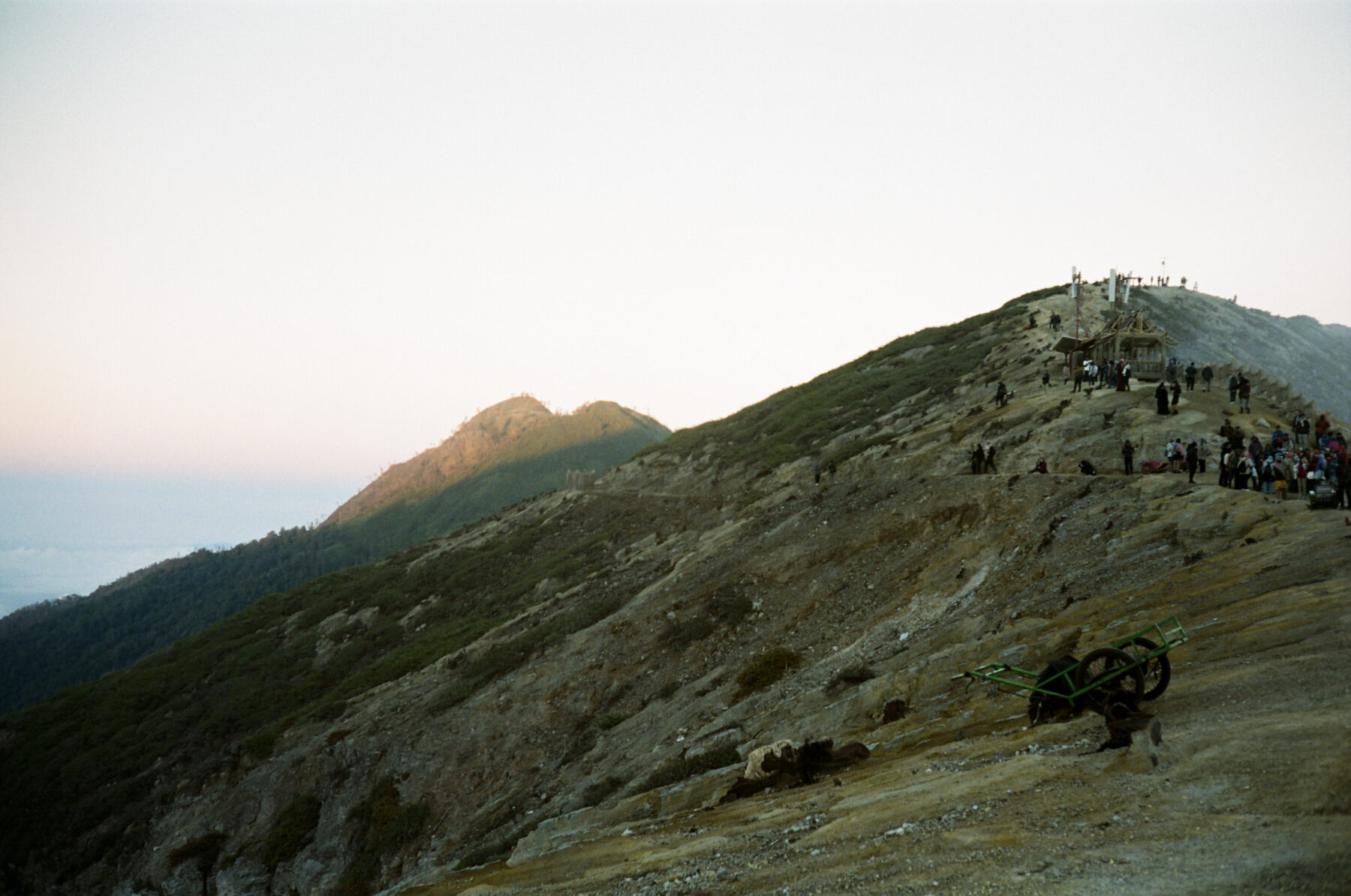
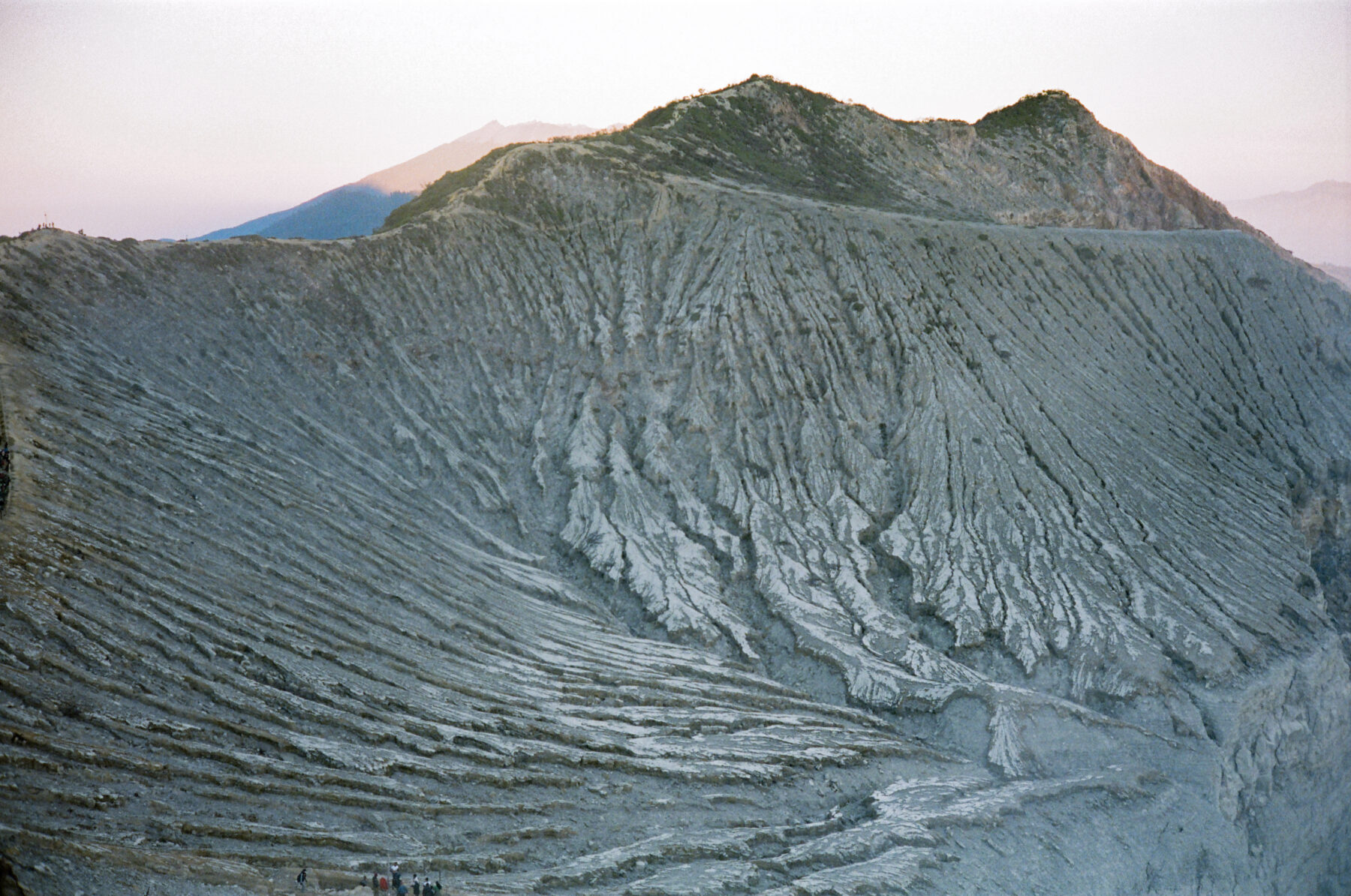
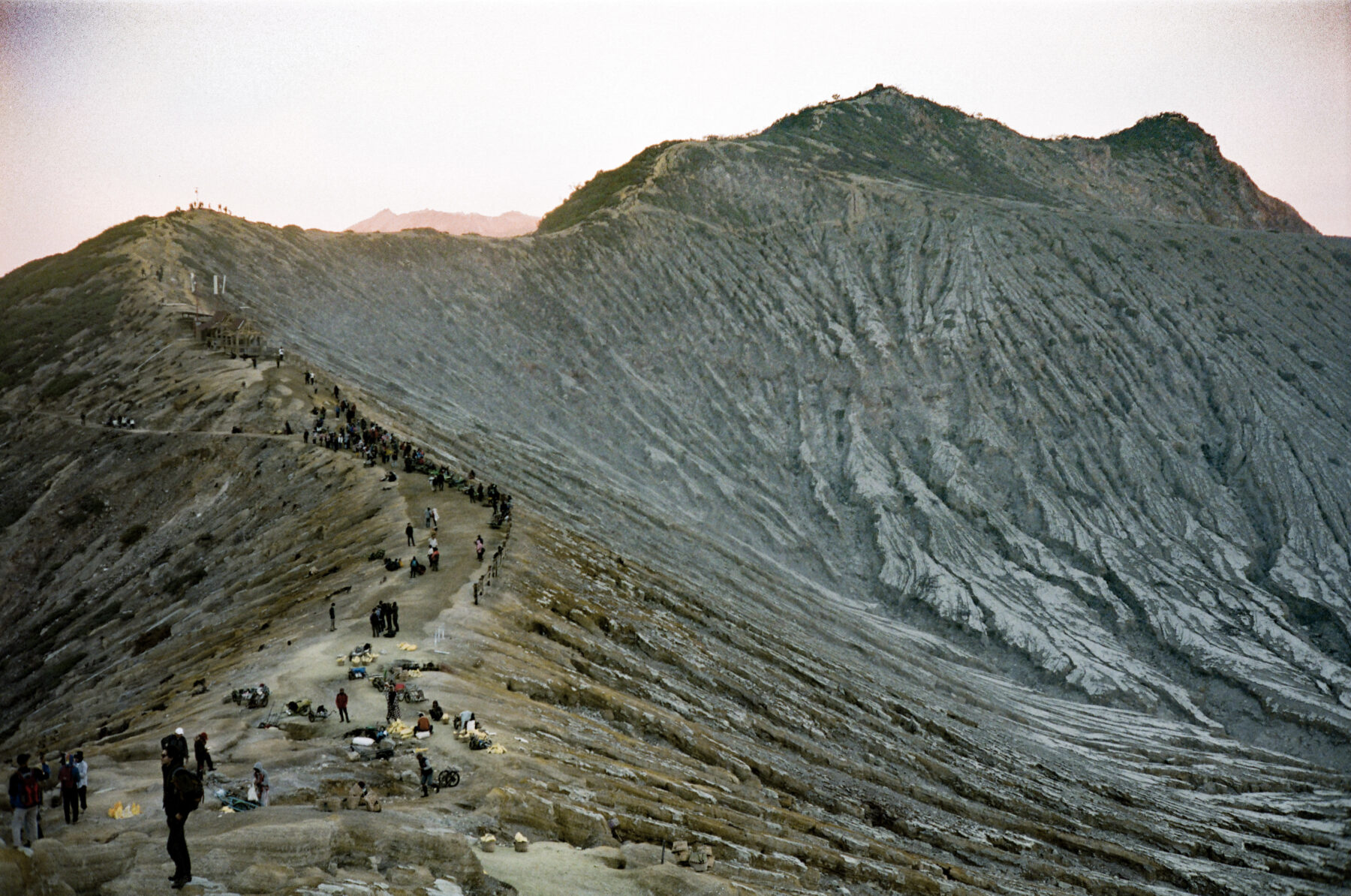
Shot on 35mm film, 2021
